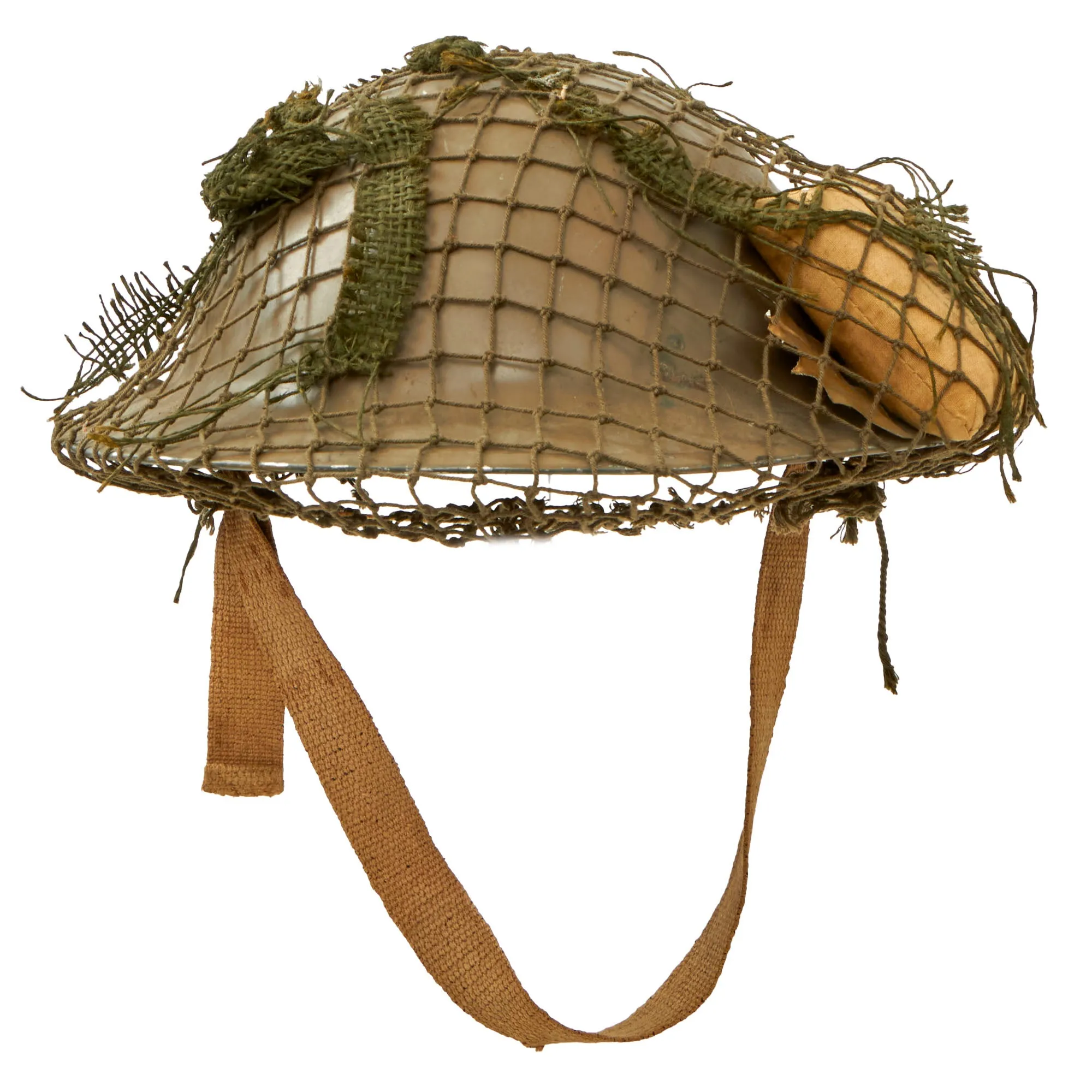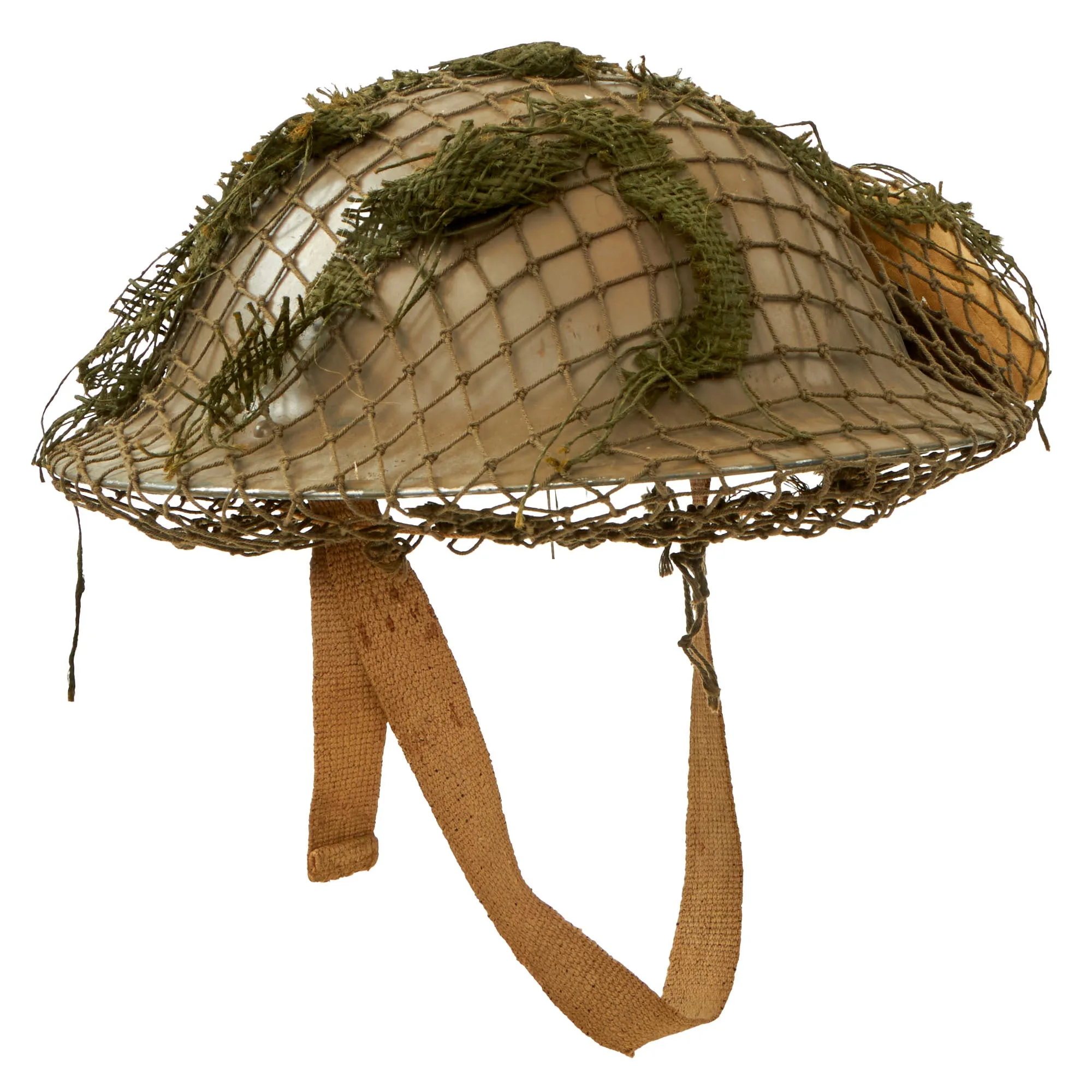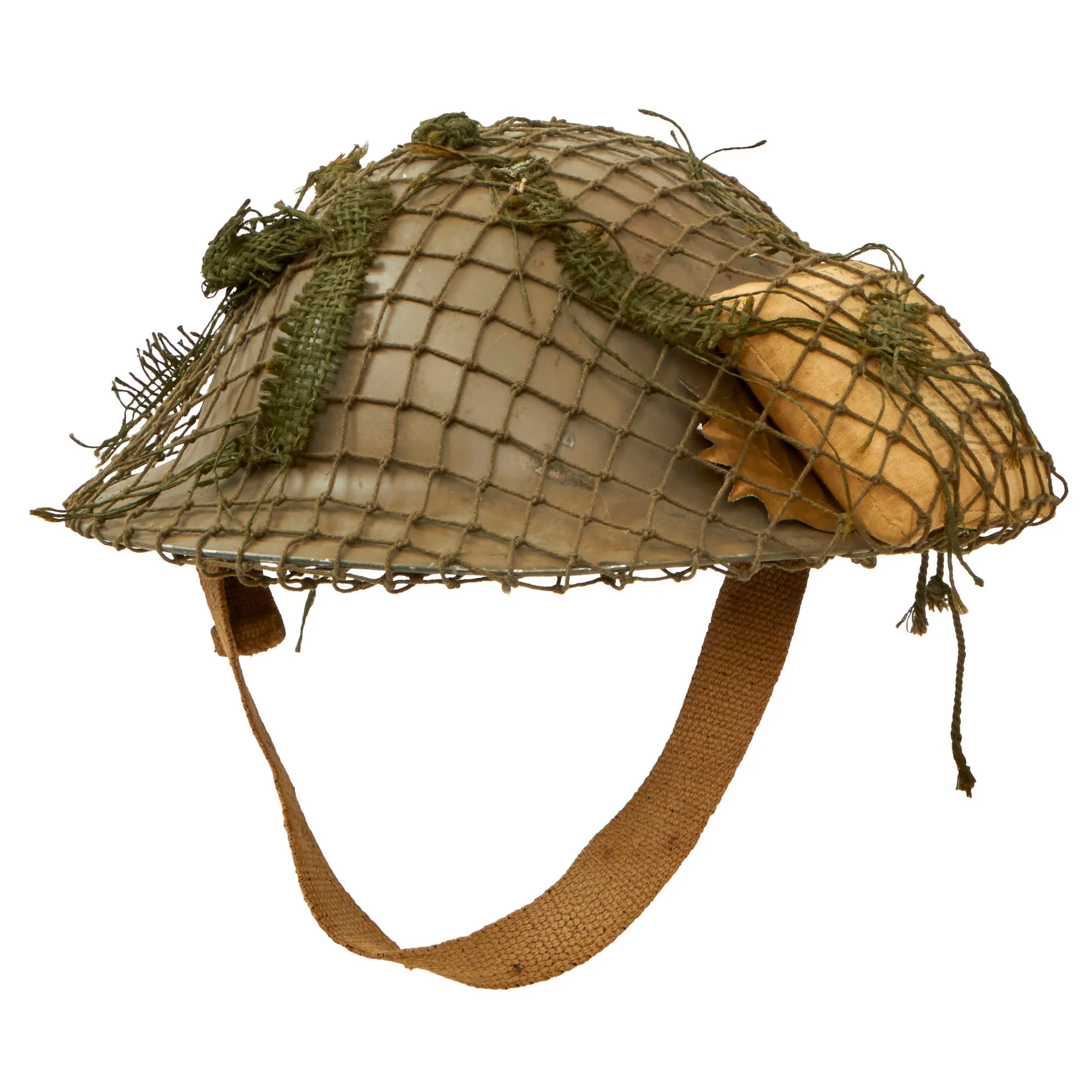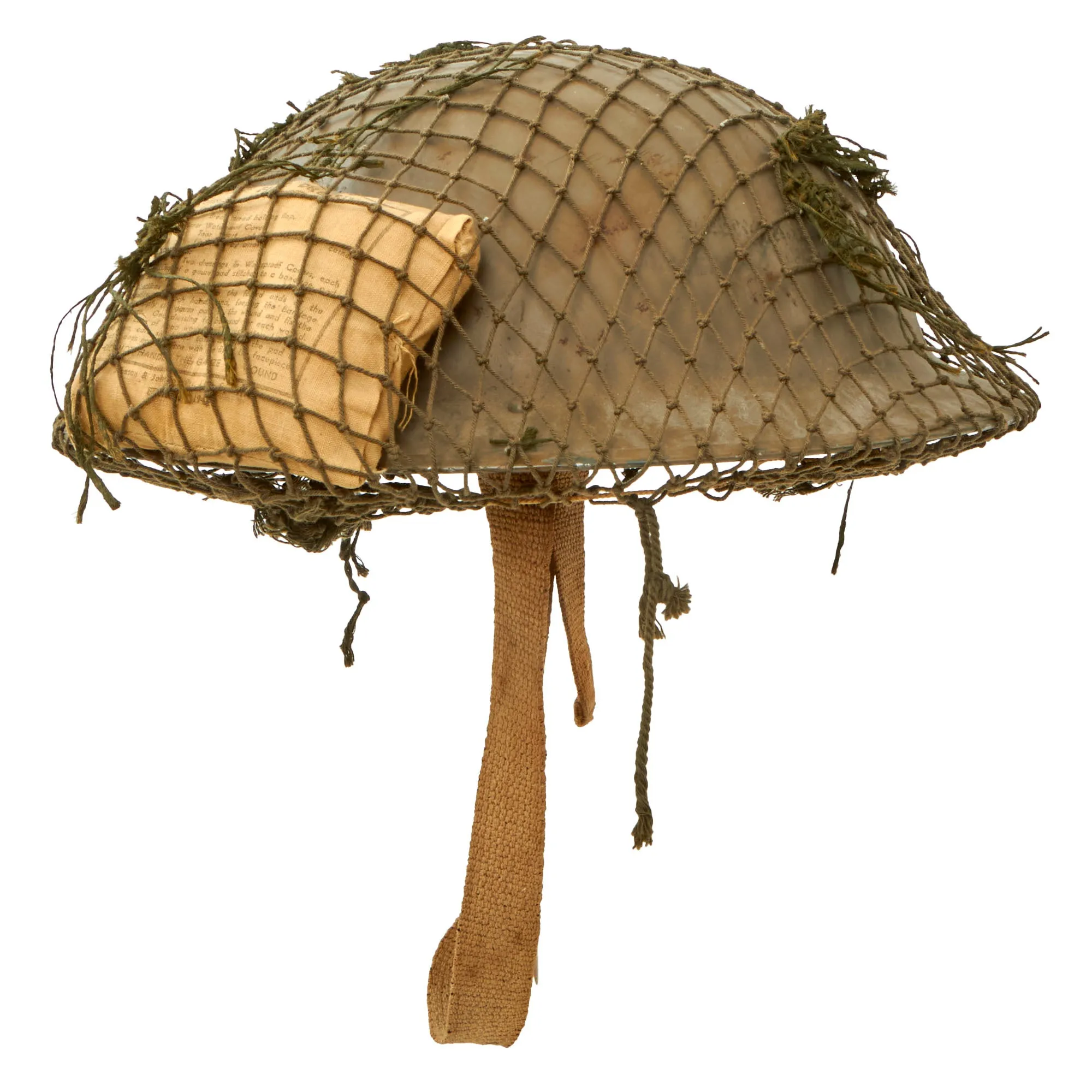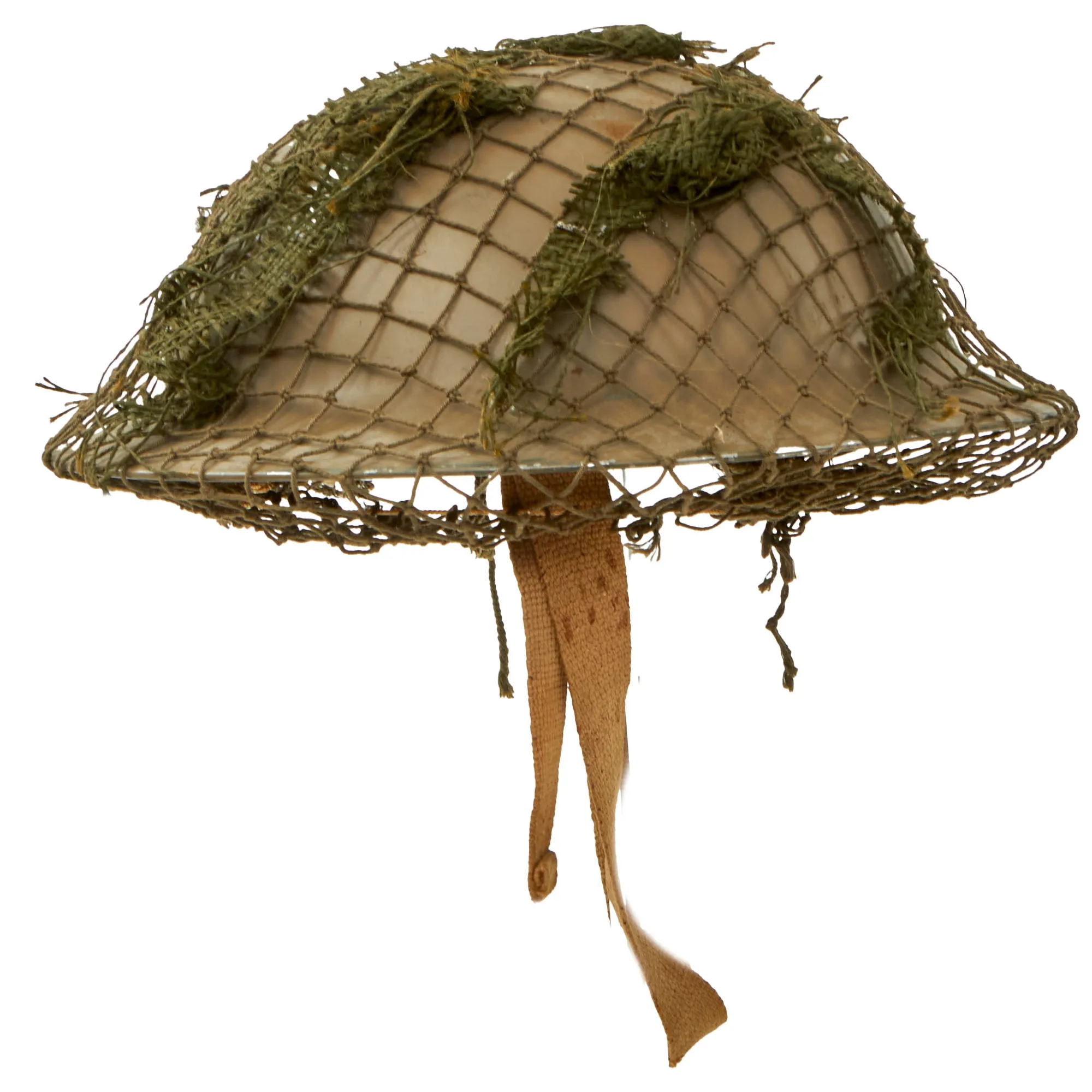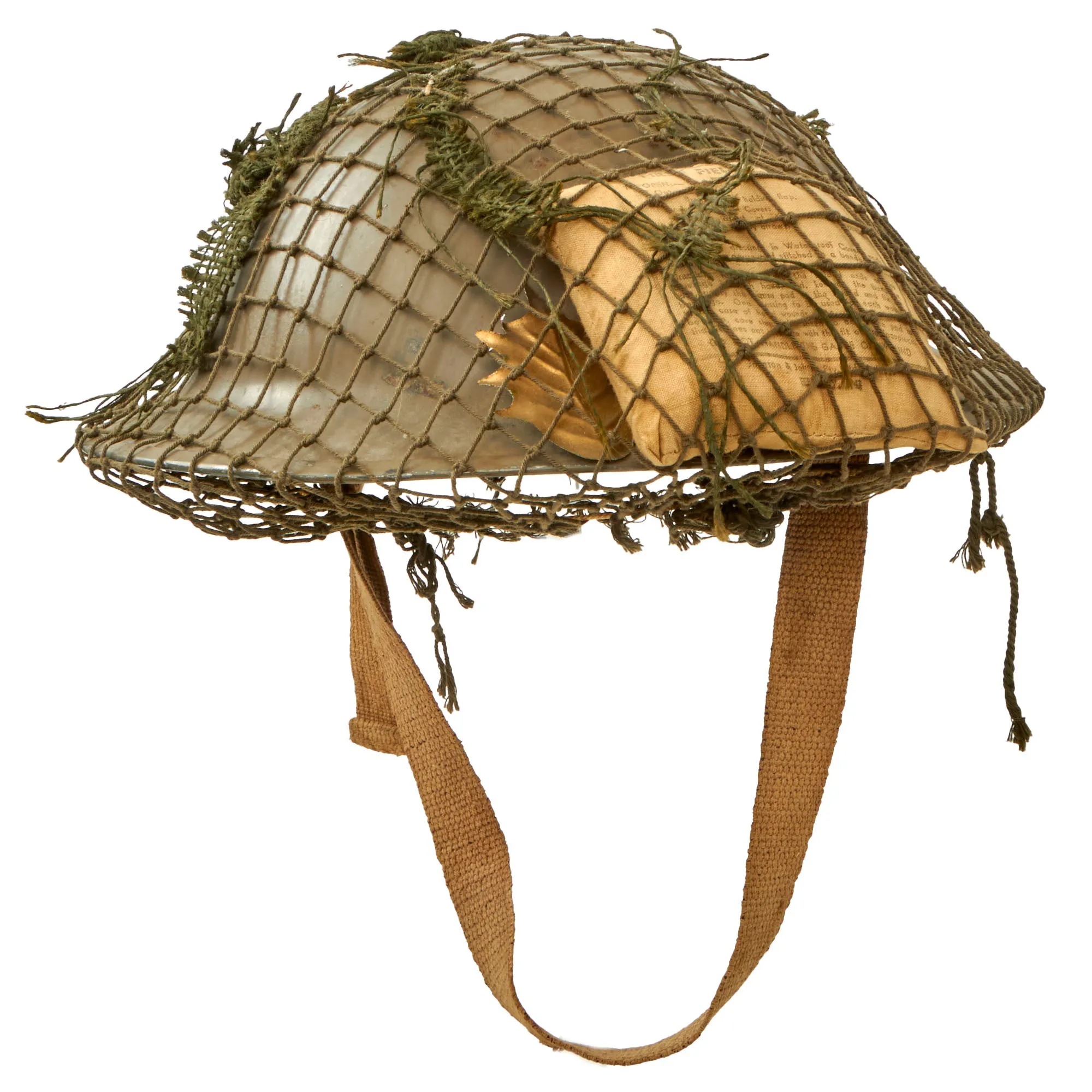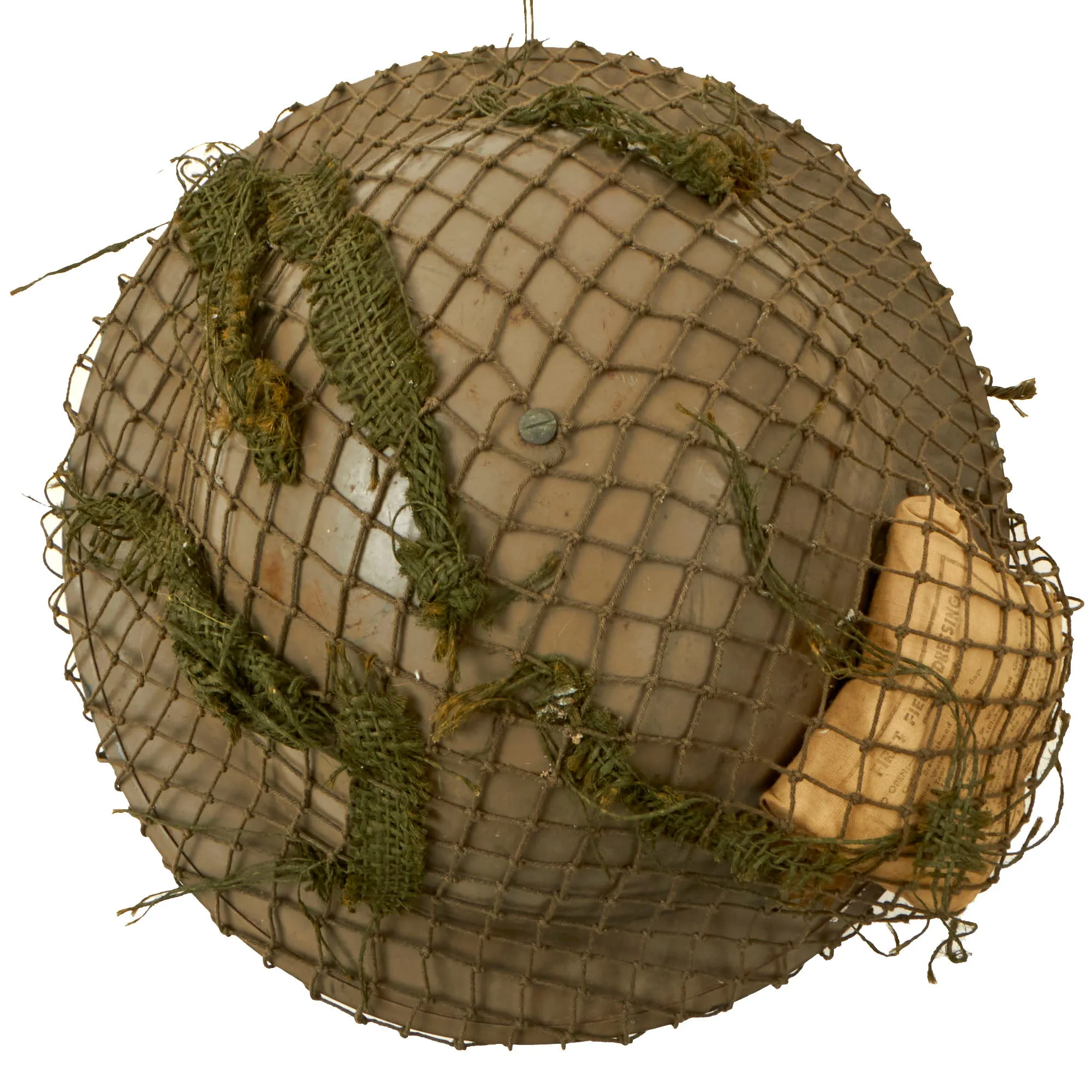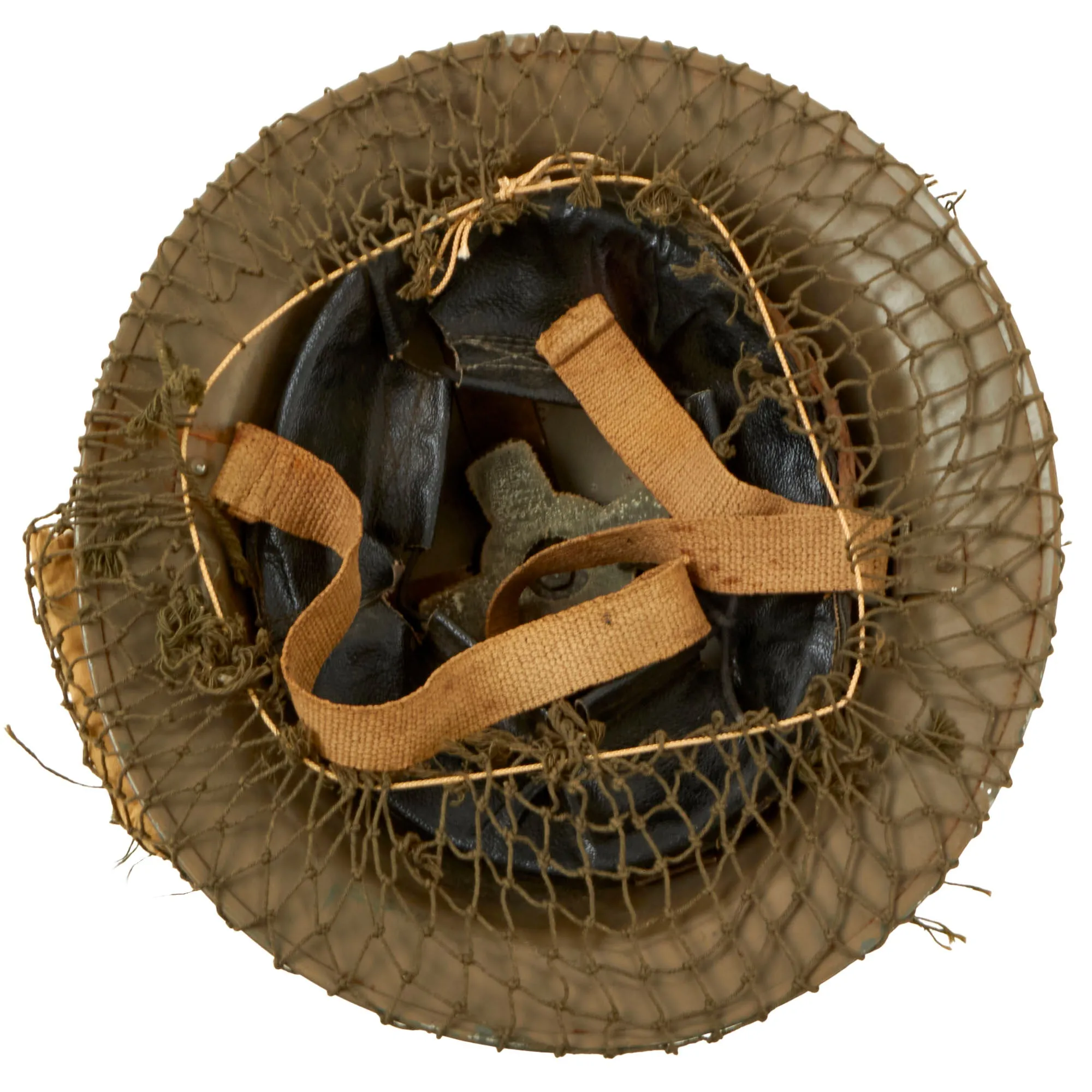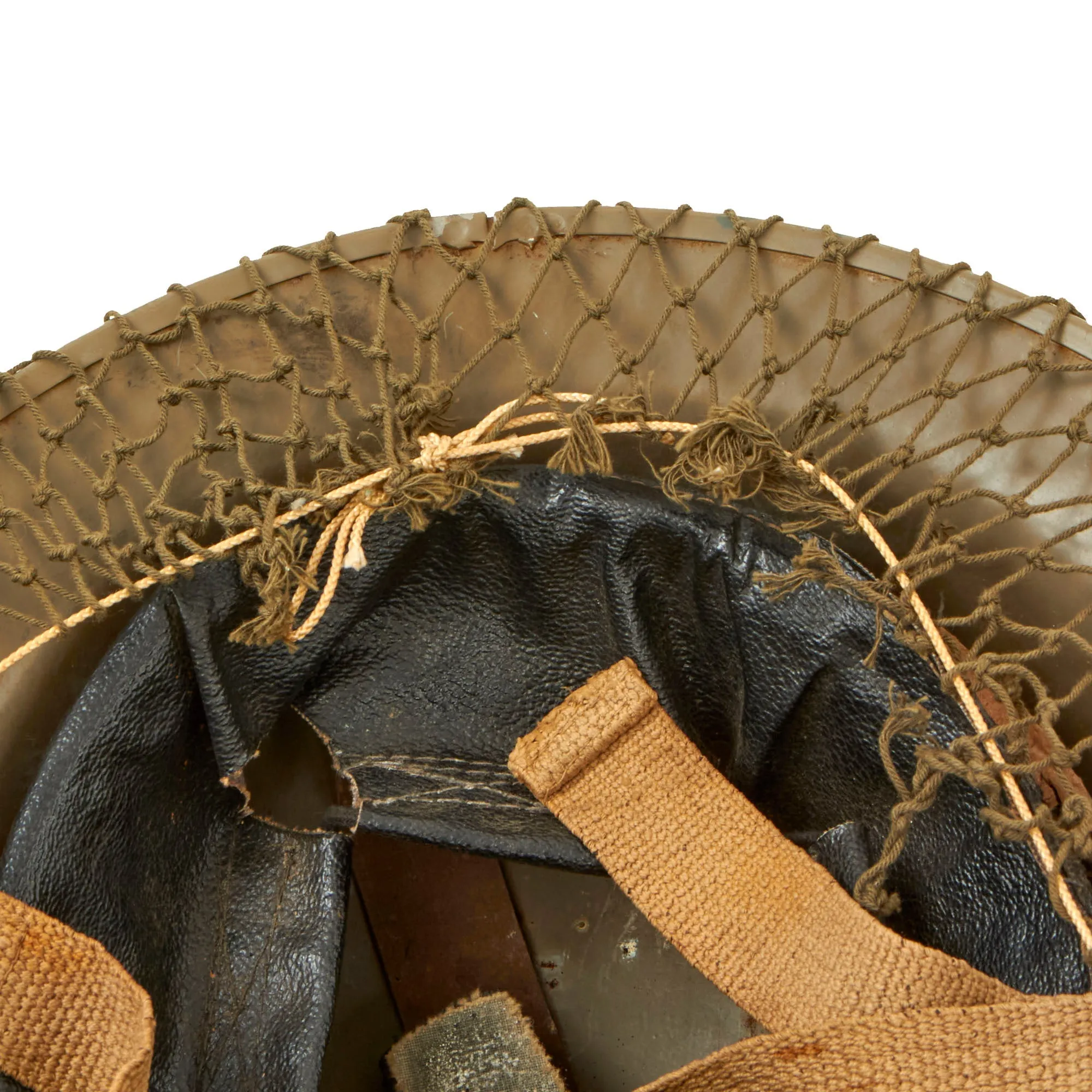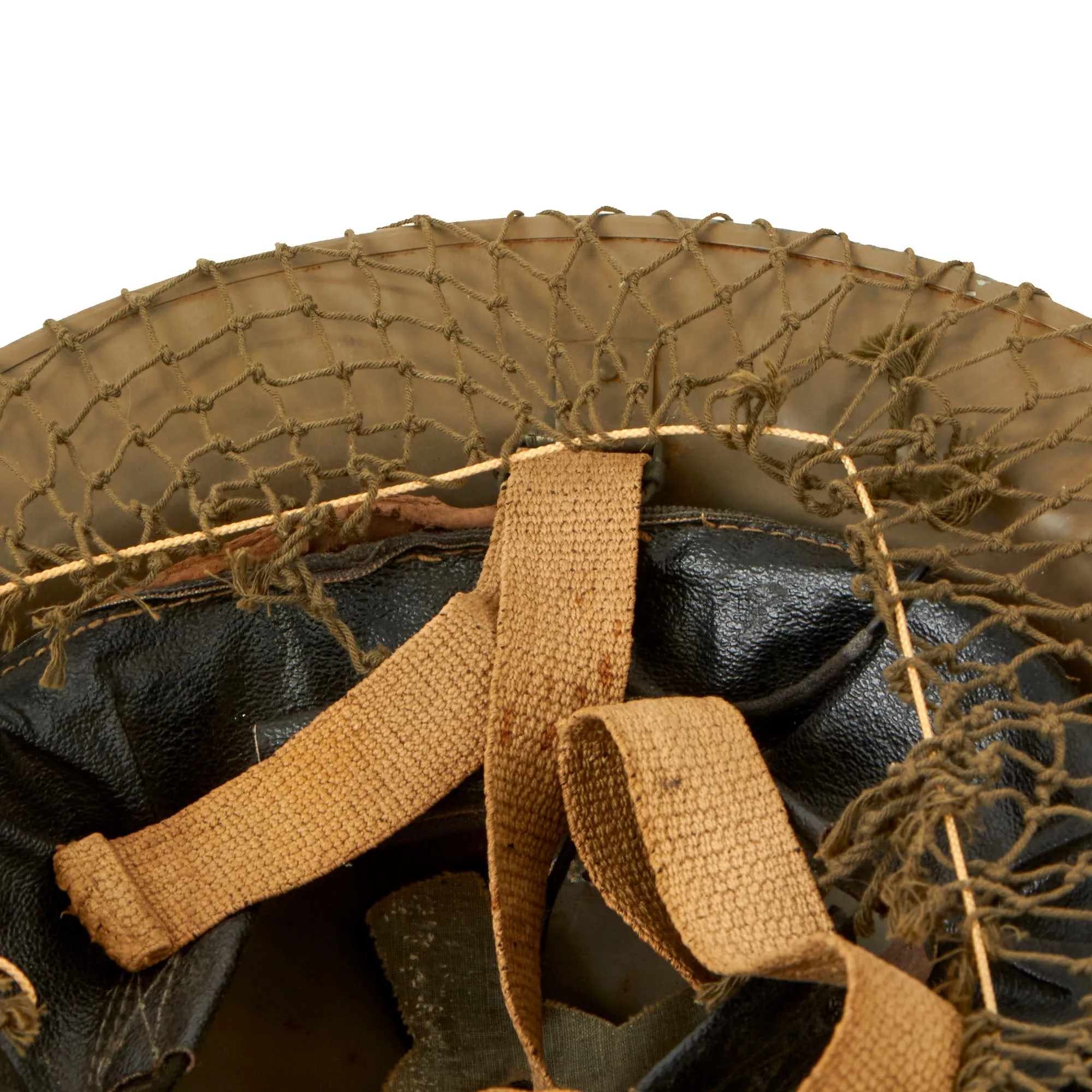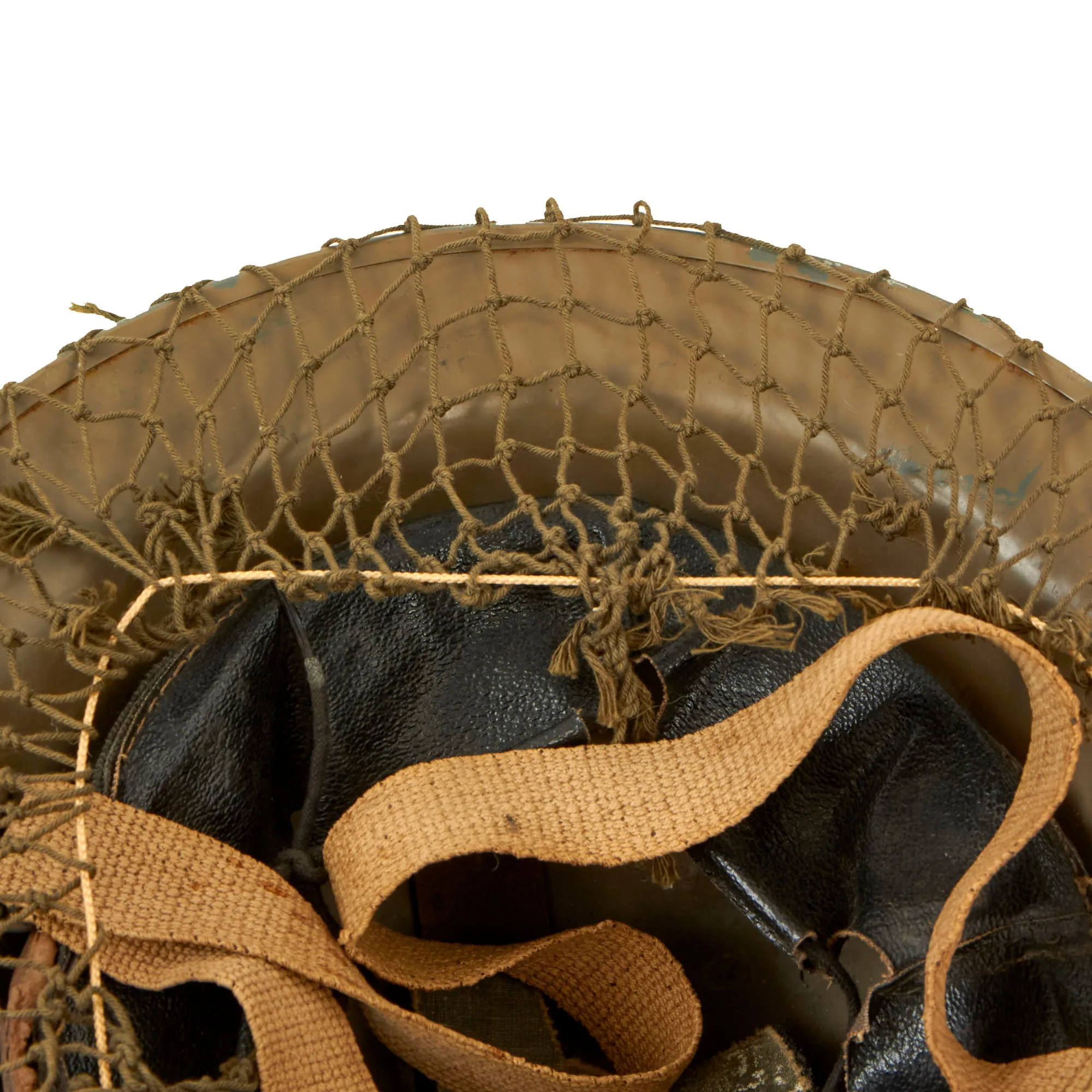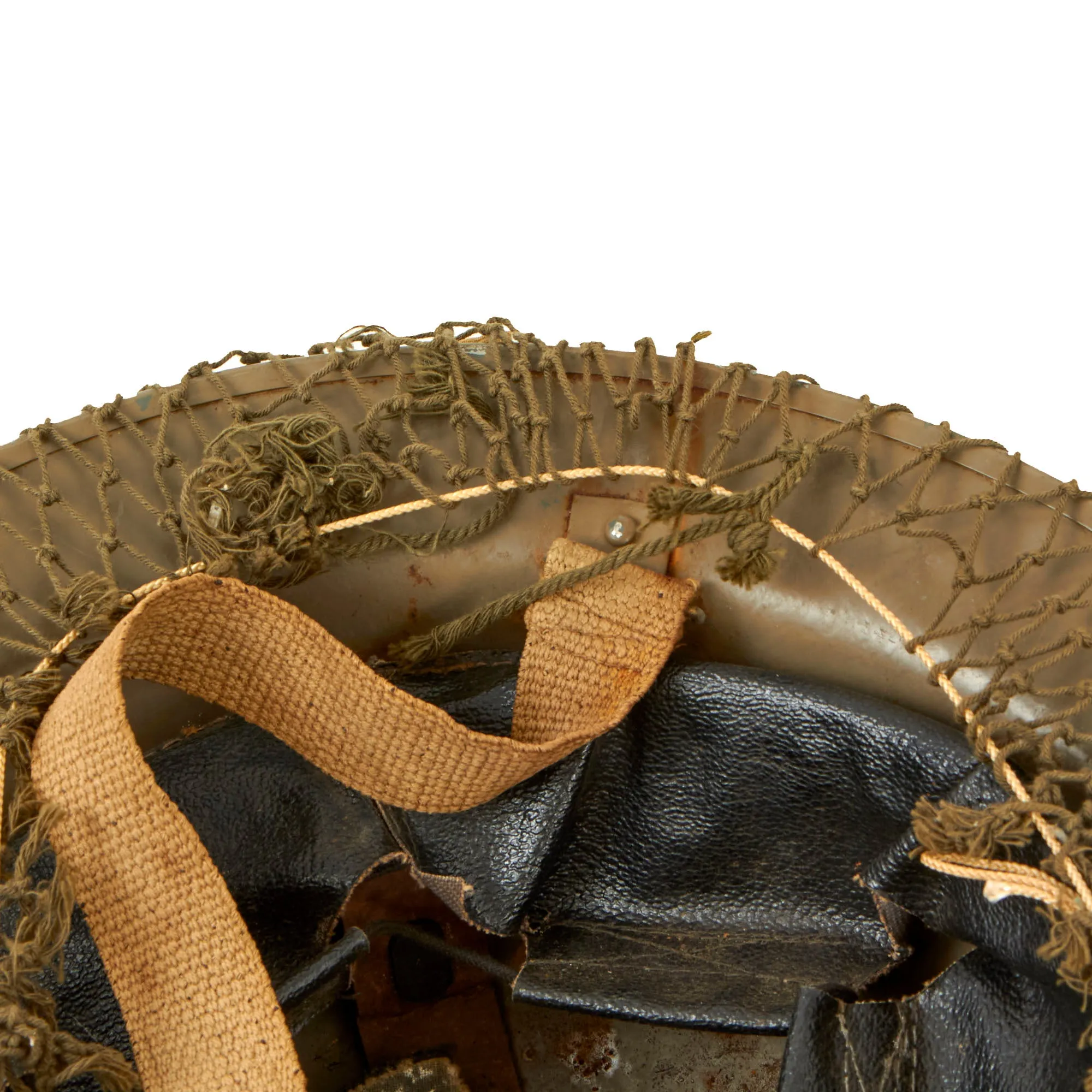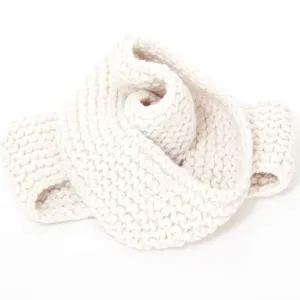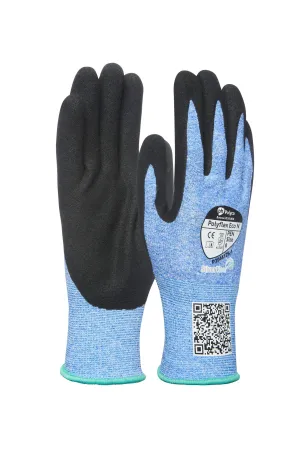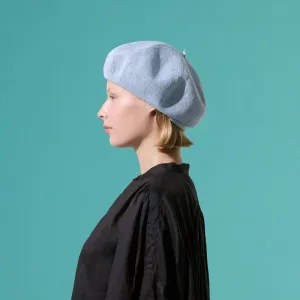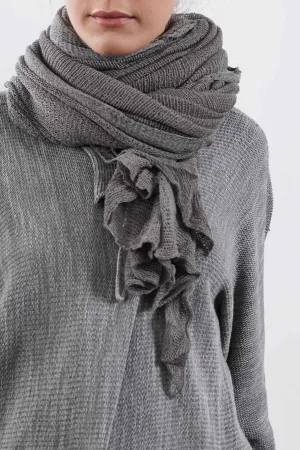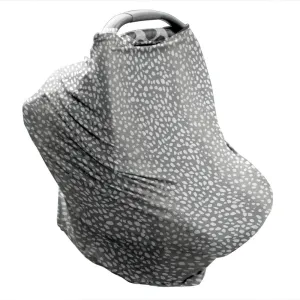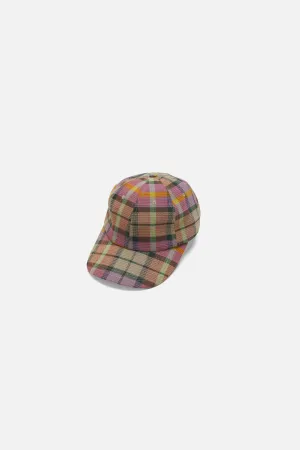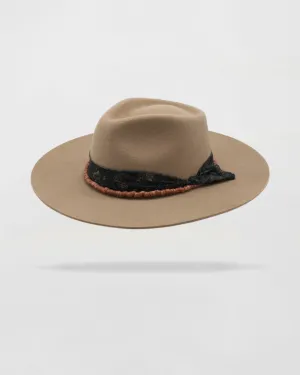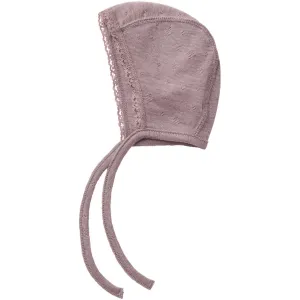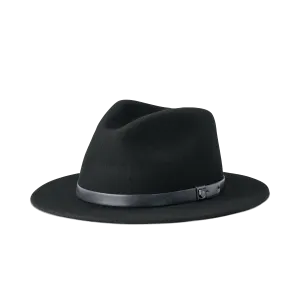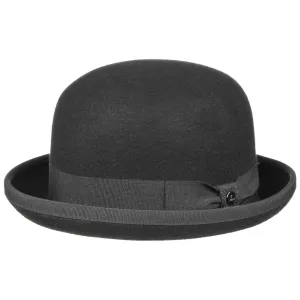Original Item: Only One Available. This is an excellent example of a genuine British Mark II steel helmet, which is dated 1941. The stamping on the underside of the shell is worn away and can’t be found, as British Manufactured helmets were often marked before they were stamped, which stretches out the markings. The only marking on the helmet and liner that can be found is a 1941 date on the shell and a liner size number; 58.
The paint is 100% original and is complete with an original helmet net, which has a lovely color to it. It has a good condition original Mk. II black oil cloth liner with adjustment cord and sprung webbing chinstrap, which does have some fraying and degradation due to age.
Inside the net is a clearly marked Commonwealth of Australia Shell Dressing, dated 1942. Field dressings were carried by all British (and Commonwealth) troops in the pocket on the front of their trousers. However it was also fairly common to see the larger Shell Dressing carried under the helmet net as well as the smaller dressing.
This is an excellent condition, complete and original early WWII steel Canadian “Tommy” helmet.
History of the Brodie helmet:
The Brodie helmet, called Helmet, steel, Mark I helmet in Britain and the M1917 Helmet in the U.S., is a steel combat helmet designed and patented in 1915 by Englishman John Leopold Brodie. Colloquially, it was called the shrapnel helmet, Tommy helmet, Tin Hat, and in the United States the doughboy helmet. Worn by Australians during WW2 and sometimes known as 'Panic Hat'. It was also known as the dishpan hat, tin pan hat, washbasin, battle bowler (when worn by officers), and Kelly helmet. The US version, the M1917, was copied from the British Mk 1 steel helmet of 1916. The German Army called it the Salatschüssel (salad bowl).
At about the same time, the British War Office had seen a similar need for steel helmets. The War Office Invention Department was ordered to evaluate the French design. They decided that it was not strong enough and too complex to be swiftly manufactured. British industry was not geared up to an all-out effort of war production in the early days of World War I, which also led to the shell shortage of 1915.
A design patented in 1915 by John L. Brodie of London offered advantages over the French design. It was constructed in one piece that could be pressed from a single thick sheet of steel, giving it added strength.
Brodie's design resembled the medieval infantry kettle hat or chapel-de-fer, unlike the German Stahlhelm, which resembled the medieval sallet. The Brodie had a shallow circular crown with a wide brim around the edge, a leather liner and a leather chinstrap. The helmet's "soup bowl" shape was designed to protect the wearer's head and shoulders from Shrapnel shell projectiles bursting from above the trenches. The design allowed the use of relatively thick steel that could be formed in a single pressing while maintaining the helmet's thickness. This made it more resistant to projectiles but it offered less protection to the lower head and neck than other helmets.
The original design (Type A) was made of mild steel with a brim 1.5-2 inches (3851 mm) wide. The Type A was in production for just a few weeks before the specification was changed and the Type B was introduced in October 1915. The specification was altered at the suggestion of Sir Robert Hadfield to a harder steel with 12% manganese content, which became known as "Hadfield's steel", which was virtually impervious to shrapnel balls hitting from above. Ballistically this increased protection for the wearer by 10 percent. It could withstand a .45 caliber pistol bullet traveling at 600 feet (180 m) per second fired at a distance of 10 feet (3.0 m). It also had a narrower brim and a more domed crown.
The original paint scheme, suggested by Brodie, was a mottled light green, blue, and orange camouflage but they were also painted in green or blue-grey. That same month the first delivery of the helmets was made to British Army troops. Initially, there were far from enough helmets to equip every man, so they were designated as "trench stores", to be kept in the front line and used by each unit that occupied the sector. It was not until the summer of 1916, when the first one million helmets had been produced, that they could be generally issued.
The Brodie helmet reduced casualties but was criticized by General Herbert Plumer on the grounds that it was too shallow and too light-reflective, its rim was too sharp, and its lining was too slippery. These criticisms were addressed in the Mark I model helmet of 1916, which had a separate folded rim, a two-part liner and matte khaki paint finished with sand, sawdust, or crushed cork to give a dull, non-reflective appearance. In 1917, the liner was modified to include a rubber cushion to make it more comfortable, although this was not adopted for the M1917. Towards the end of the war, helmets were often painted with unit insignia. These are often called "parade helmets" by collectors.




